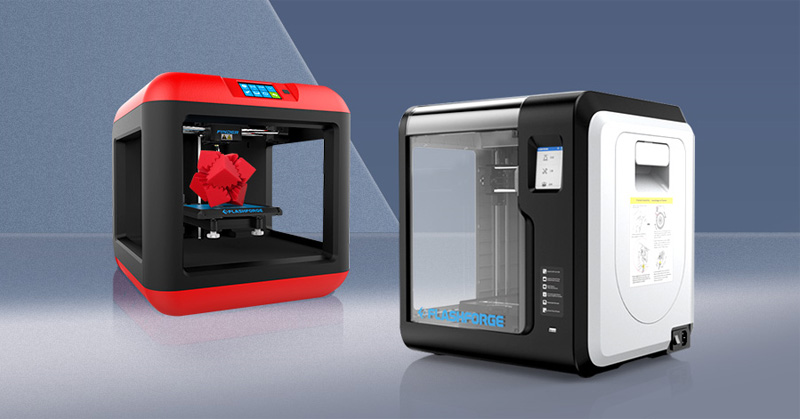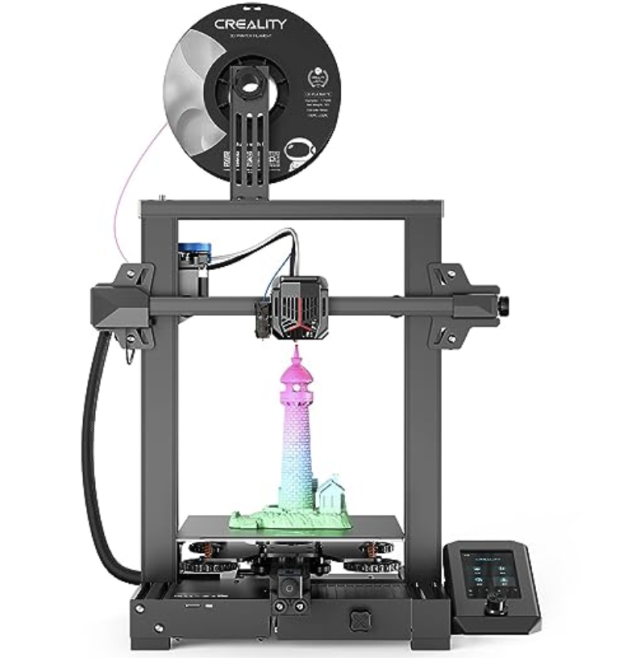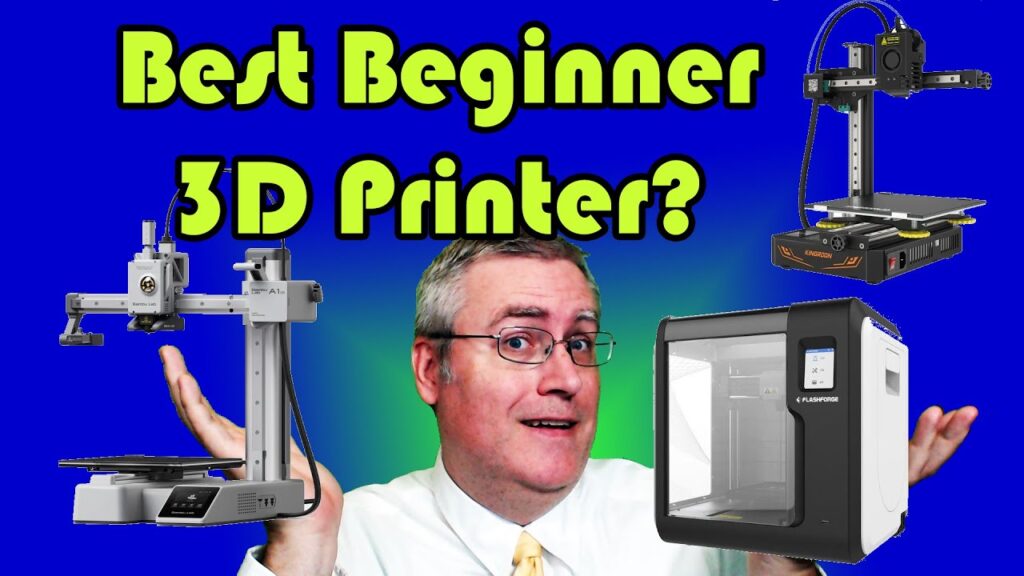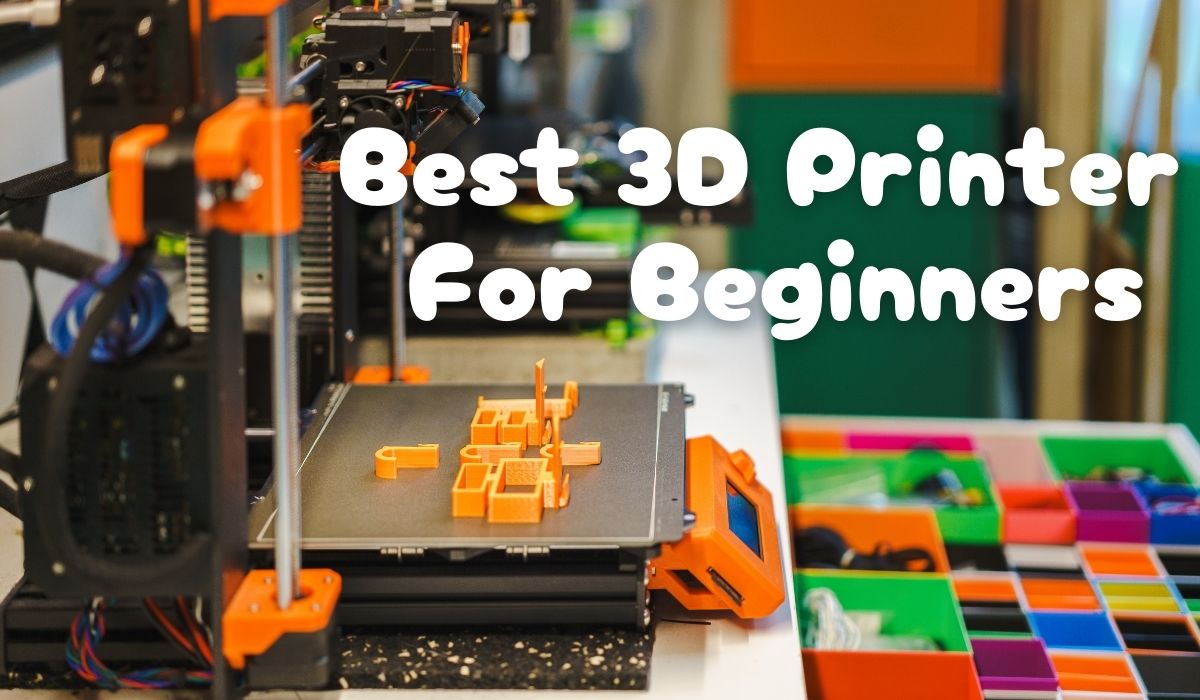The Creality Ender 3 is the best 3D printer for beginners that we recommend. Its ease of use and affordable price make it a top choice.
Entering the world of 3D Printing can be both exciting and daunting. The Creality Ender 3 stands out for newcomers due to its balance between performance and price. This user-friendly Printer requires some assembly, offering new users a hands-on learning experience without overwhelming complexity.
Its open-source nature also encourages community support and a wealth of online resources for troubleshooting and upgrades. The Printer’s compact size suits home environments where space is at a premium. With a sturdy build and the capacity to produce quality prints, the Ender 3 is a gateway to the rapidly evolving field of 3D Printing. This makes it an intelligent investment for hobbyists and educators keen on introducing the technology to their workflow or curriculum.

Credit: www.flashforge.com
Did You Know Ultra Short Throw (UST) projectors are transforming home entertainment into a great experience? Read to check more.
The Basics of Best 3D Printer for Beginners
Welcome to the fascinating world of 3D Printing, a realm where your imagination can come to life layer by layer! Whether you’re a hobbyist or looking to dive into a new creative project, understanding the basics of 3D Printing is the first step towards mastery. Let’s uncover the essentials you need to know before choosing the best 3D Printer for beginners.
What Is 3D Printing?
3D printing, or additive manufacturing, is a process that creates a physical object from a digital design. Unlike traditional manufacturing, which often requires cutting away material, 3D Printing builds objects layer by layer, adding material only where needed. This method opens up possibilities for creating complex shapes and intricate designs that would be difficult or impossible to achieve with conventional techniques.
How Does A 3D Printer Work?
Imagine a printer that uses plastic, resin, or metal instead of ink to create a three-dimensional object. The best 3D printer for beginners follows a digital blueprint, or model, and prints successive layers of material until the object is fully formed. Each layer is a thin slice of the final object, almost like stacking sheets of paper to create a sculpture. The best 3D Printer for beginners is the Fused Deposition Modeling (FDM) printer, which heats and extrudes plastic filament to build up the object layer by layer.
Benefits Of 3D Printing For Beginners
Embarking on the journey of 3D Printing opens a world of possibilities. Beginners find 3D Printing exciting as it transforms ideas into tangible objects. This section delves into the benefits beginners can reap from this innovative technology.
Creativity And Customization
3D Printing ignites creativity and offers unparalleled customization. Users can design and print:
- Unique gifts
- Personalized home decor
- Custom tools and gadgets
It provides a hands-on experience in bringing ideas to life. The process is both simple and rewarding, making it ideal for beginners.
Learning And Skill Development
Beginners gain valuable skills through 3D Printing. These include:
| Skill | Description |
|---|---|
| Design | Understanding 3D modeling software |
| Problem-solving | Finding creative solutions to design challenges |
| Technical knowledge | Learning about materials and printer operation |
Each project builds confidence and technical know-how, preparing users for more complex tasks.
Key Features To Look For In A Beginner-friendly 3D Printer
Choosing the best 3D Printer for beginners involves understanding key features that enhance the learning curve and user experience. Focus on features that promise simplicity, versatility, and quality results. Here are the essential aspects to consider:
Print Quality And Resolution
Print quality and resolution are crucial in 3D Printing. High resolution means smoother and more detailed prints. Beginners should look for a printer with a layer resolution of at least 100 microns. This ensures clear and precise prints, which are ideal for various projects. Consider printers with adjustable resolution settings to experiment with different finishes.
Ease Of Use And Setup
The best 3D printer for beginners should be easy to set up and use. Look for models that offer pre-assembled kits or have minimal assembly requirements. Features like a touchscreen interface, intuitive software, and clear instructions can significantly reduce setup time and ease the initial learning process. Automated features such as bed-leveling and filament detection also enhance the user experience, making 3D Printing more accessible.
Printing Materials Compatibility
Compatibility with various printing materials adds flexibility to your 3D printing experience. Beginners should opt for printers that handle multiple materials, such as PLA, ABS, and PET. This compatibility allows users to explore different textures and material properties essential for learning and experimentation. Check if the Printer supports open-source material or requires proprietary filaments, as this will impact the cost and availability of supplies.

Credit: www.usnews.com
Top 3D Printers Recommended For Beginners
Embarking on the 3D printing journey excites the imagination. Choosing the right Printer is critical. This guide spotlights top picks for novices. Each Printer balances ease of use, quality, and practicality.
Creality Ender 3: Affordable And User-friendly
Creality Ender 3 stands out for its affordability and simplicity. It’s the go-to for budget-conscious beginners. Let’s break down its features:
- Intuitive Design: Easy setup gets you printing fast.
- Pre-assembled: Minimal assembly required.
- Customer Support: Helpful guides and support.
Anycubic Kobra 2 Neo: High-quality Prints And Versatility
Opt for Anycubic Kobra 2 Neo for its exceptional print quality and adaptability. Ideal for those who prioritize detail and variety. Highlights include:
| Feature | Description |
|---|---|
| Resolution | High-resolution printing captures every detail. |
| Materials | Compatible with various filaments for diverse projects. |
| Build Volume | Spacious for larger prints or multiple small ones. |
X-Maker 3D Printer: Compact Size And Portability
X-Maker 3D Printer is perfect for small spaces and on-the-go Printing. Its compact design doesn’t skimp on performance. Features include:
- Lightweight: Easy to move and transport.
- Small Footprint: Fits on any desk or table.
- Plug and Play: Start printing right out of the box.
Comparison Of Beginner 3D Printers
Welcome to the ultimate showdown of the best 3D printers for beginners! This guide will compare different models to help you find the perfect fit. Whether you’re a hobbyist or stepping into the 3D printing world, understanding the essentials is key.
Price Range And Value For Money
When starting with 3D Printing, budget plays a significant role. Let’s dive into the cost-effectiveness of popular beginner 3D printers.
| Printer Model | Price | Features | Value Score |
|---|---|---|---|
| Creality Ender 3 | $169 | Easy setup, basic features, budget Friendly | 8.5/10 |
| Anycubic Kobra 2 Neo | $299 | Improved precision, more features | 9/10 |
| X-Maker 3D Printer | $459 | High quality, advanced features | 8/10 |
Printing Speed And Noise Level
Speed matters, but so does a quiet workspace. We compare how fast and loud these printers are.
- Creality Ender 3: Moderate speed, low noise – ideal for home use.
- Anycubic Kobra 2 Neo: Faster Printing, slightly more noise – great for quicker projects.
- X-Maker 3D Printer: High speed, noticeable noise – best for time-sensitive prints.
Community Support And Resources
A strong community can be a lifeline for beginners. Here’s what each Printer offers in terms of support and resources.
- Creality Ender 3: Large online community, plenty of tutorials.
- Anycube Cobra 2 Neo: Active forums, responsive customer service.
- X-Maker 3D Printer: Extensive knowledge base, in-depth guides.
Setting Up Your 3D Printer
Welcome to the world of 3D Printing! Whether you’re a hobbyist, educator, or aspiring inventor, setting up your first 3D Printer is exciting. Proper setup is crucial to ensure your 3D printing adventures start smoothly. Let’s dive into the essentials of getting your 3D Printer ready to create your first masterpiece.
Unboxing And Assembly
Open your 3D printer package with care. You’ll find several components neatly packed inside. Here’s a quick guide to set up your Printer:
- Read the manual. It has all the steps for assembly.
- Gather the tools. Some printers come with their own.
- Assemble the frame. Attach the base, columns, and top.
- Mount the print bed. It should be level and secure.
- Install the extruder. This is where filament feeds through.
- Connect the wires. Match colors or labels for guidance.
Take your time and enjoy building your new gadget!
Calibration And Test Prints
Calibration is critical for perfect prints. Follow these steps:
- Consult the manual for specific calibration instructions.
- Level the print bed. Use a piece of paper to check the distance.
- Adjust the nozzle height. It should barely touch the bed.
- Test the extruder. Ensure filament flows smoothly.
- Test prints. Use simple shapes to check quality.
Look for issues like warping or stringing. Adjust settings as needed. Celebrate your success with your first completed print!
Tips For Successful 3D Printing Projects
Embarking on your first 3D printing project can be as thrilling as intricate. To turn digital dreams into tangible realities, beginners must navigate a labyrinth of choices and challenges. The right approach can mean the difference between a masterpiece and a mess. Follow these essential tips to ensure your 3D printing endeavors are met with success.
Choosing The Right Filament
Selecting the ideal filament is a critical first step in 3D Printing. Filaments come in various materials, each with unique properties. Here are key points to consider:
- PLA – Great for beginners, biodegradable, and has a lower melting point.
- ABS – Durable and robust but requires a heated bed and well-ventilated area.
- PETG – A balance of ease of use and durability; moisture-resistant.
Optimizing Print Settings
Achieving the perfect print requires tweaking settings to fit your model and filament. Consider these adjustments:
| Setting | Purpose | Tip |
|---|---|---|
| Print Speed | Controls how fast the printer lays down filament | Start slow to ensure accuracy |
| Layer Height | Effects print detail and duration | Fine layers for detail, thicker for speed |
| Temperature | Impacts filament flow | Adjust according to filament type |
Troubleshooting Common Issues
Common issues can stump beginners. Here’s how to tackle a few:
- Warping – Ensure the print bed is level and adequately heated.
- Clogging – Keep the nozzle clean and verify the correct temperature.
- Stringing – Fine-tune retraction settings to prevent excess filament.
Remember, patience and persistence are your allies in mastering 3D Printing. Use these tips to guide your journey from novice to pro.
Exploring Beyond Beginner Level
So, you’ve mastered the basics of 3D Printing and are ready for more? Great! Exploring beyond the beginner level opens up a new world of possibilities. It’s time to tackle more complex projects and refine your 3D printing skills. Let’s dive into how you can push the boundaries of your 3D printing journey.
Experimenting With Advanced Techniques
As you grow more confident with 3D Printing, it’s natural to experiment. Trying advanced techniques can lead to stunning results. Here are some to consider:
- Dual Extrusion: Print with two colors or materials.
- Support Structures: Create intricate designs that were previously impossible.
- Variable Layer Height: Fine-tune resolution for detailed surfaces.
Remember, success comes from both practice and patience.
Upgrading Your 3D Printer
Upgrading your Printer is a surefire way to enhance your 3D printing capabilities. Consider these upgrades:
| Upgrade | Benefits |
|---|---|
| Hotend: | Enables printing with different materials. |
| Build Plate: | Improves adhesion and finish. |
| Stepper Motors: | Increases precision and reliability. |
Upgrades can transform your entry-level Printer into a powerhouse. Start with one upgrade at a time to see noticeable improvements in your prints.

Credit: www.youtube.com
Frequently Asked Questions
Which Type Of 3D Printer Is Best For Beginners?
The Fused Deposition Modeling (FDM) is overall the best 3D printer for beginners due to its simplicity, affordability, and widespread use in the hobbyist community.
What Is The First 3D Printer I Should Buy?
The best first 3D Printer to buy is the Creality Ender 3. It offers excellent value, is easy to use, and supports various filament types. Perfect for beginners, it also provides outstanding print quality.
What Is The Best 3D Printer For Hobbyists?
The Creality Ender 3 Pro is the best 3D Printer for hobbyists due to its affordability, reliability, and ease of use.
What Is The Most Reliable Easy To Use 3d Printer?
The Ultimaker S3 is a highly reliable and user-friendly 3D printer, ideal for professionals and hobbyists.
Conclusion
Selecting the best 3D Printer for beginners can be daunting. Yet, with options like the XYZprinting Da Vinci Mini, Creality Ender 3, and the FlashForge Finder available, there’s a perfect match for every novice. Embrace your creativity and step into 3D Printing confidently, knowing these models offer user-friendly experiences and reliable performance to kickstart your journey.
